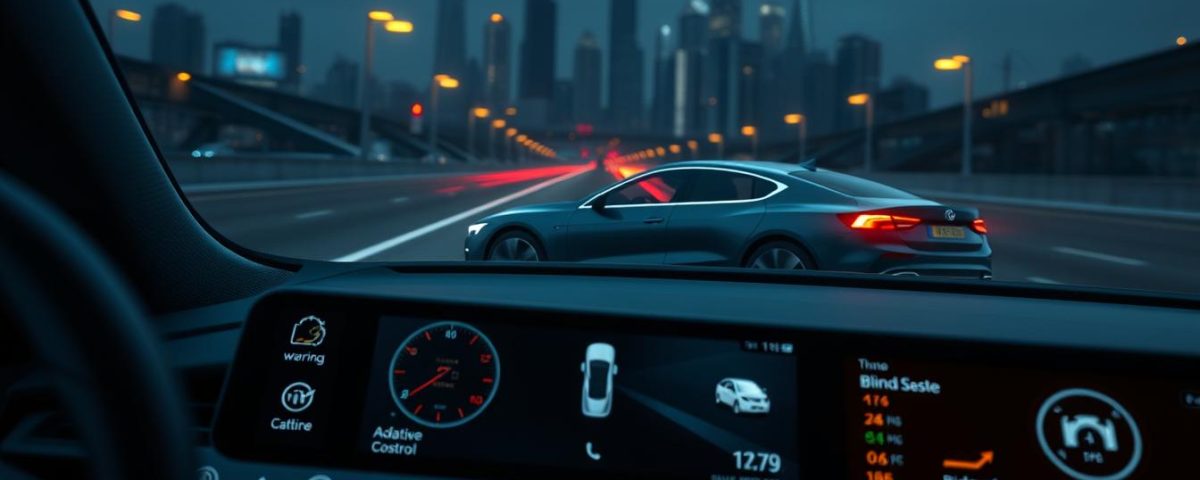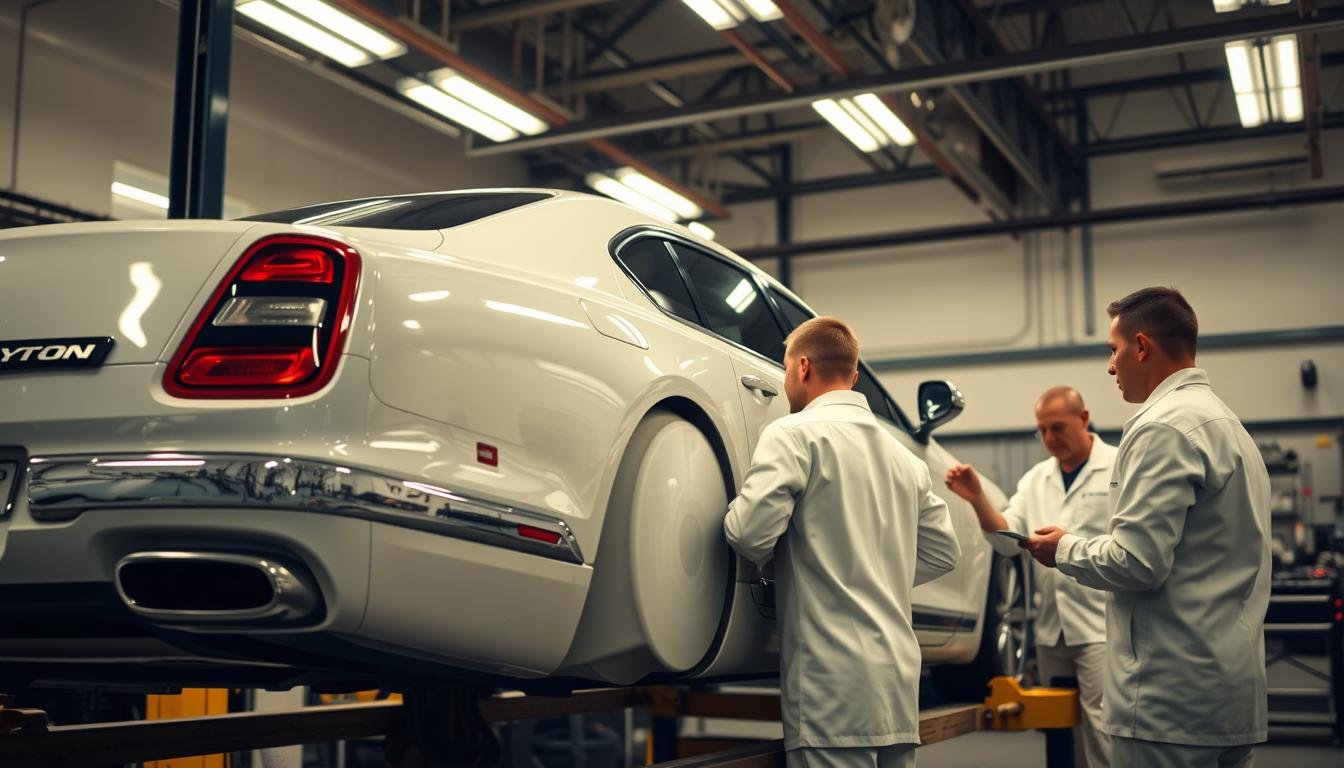
How We Handle High-End Vehicle Collision Repairs

How Texas Weather Affects Your Vehicle’s Exterior
At Miracle Body and Paint Collision Center, we understand the importance of Advanced Driver Assistance Systems (ADAS) in modern vehicles. By 2030, it’s predicted that 83% of vehicles will be equipped with some level of ADAS, a significant increase from 30% in 2019. This growth underscores the automotive industry’s commitment to enhancing vehicle safety.
ADAS features, such as lane departure warning and adaptive cruise control, rely on sophisticated sensors to function correctly. However, even minor collisions or routine maintenance can affect the alignment of these sensors, potentially compromising the effectiveness of ADAS. Proper calibration afterrepairs is crucial to maintaining the integrity of these safety features.
Understanding the relationship between vehicle repairs and ADAS functionality is essential for driver safety. As we explore this topic further, we’ll discuss the types of ADAS technologies and their contribution to overall car safety.
Key Takeaways
- Proper calibration of ADAS after repairs is crucial for maintaining vehicle safety.
- Minor collisions can affect the alignment of ADAS sensors.
- ADAS features rely on sophisticated sensors to function correctly.
- Understanding the impact of repairs on ADAS is essential for driver safety.
- The prevalence of ADAS in vehicles is expected to grow significantly by 2030.
Understanding Modern ADAS Technology
Modern vehicles are increasingly equipped with Advanced Driver Assistance Systems (ADAS) that enhance safety and driving convenience. These sophisticated electronic systems are designed to improve the overall driving experience by providing automation and driver support.
What Are Advanced Driver Assistance Systems?
Advanced Driver Assistance Systems (ADAS) are complex technologies that use a network of sensors, cameras, and radar units to monitor the vehicle’s surroundings and assist the driver in various tasks. These systems are strategically placed throughout the vehicle to ensure comprehensive monitoring of road conditions and vehicle surroundings.
Common ADAS Features in Today’s Vehicles
Some common ADAS features found in modern vehicles include:
- Adaptive Cruise Control: Automatically adjusts your car’s speed to match the vehicle in front.
- Automatic Emergency Braking: Uses radar and cameras to identify threatening situations and activate brakes.
- Lane Departure Warning: Alerts the driver if the vehicle drifts out of its lane.
- Blind Spot Detection: Warns the driver of vehicles in the blind spot.
- Parking Assistance: Helps make parking safer and more convenient.
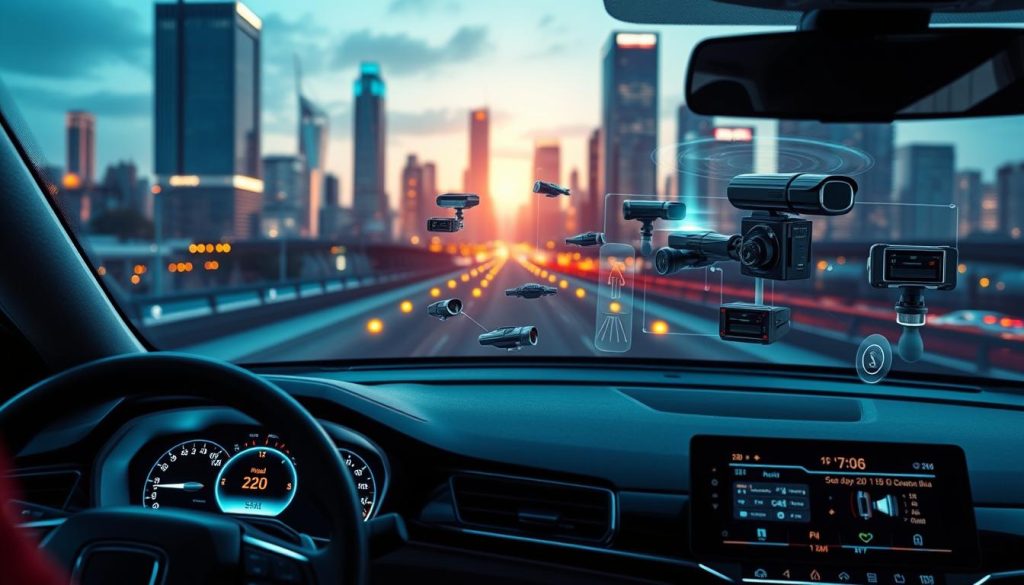
How ADAS Contributes to Vehicle Safety
ADAS provides significant safety benefits, including accident prevention, reduced severity of collisions, and enhanced driver awareness. By working together as an integrated safety network, these systems enhance overall vehicle safety. Understanding the technological foundation of ADAS is crucial for appreciating why specialized calibration procedures are necessary after certain repairs.
The Impact of Collision Damage on ADAS Systems After Repairs
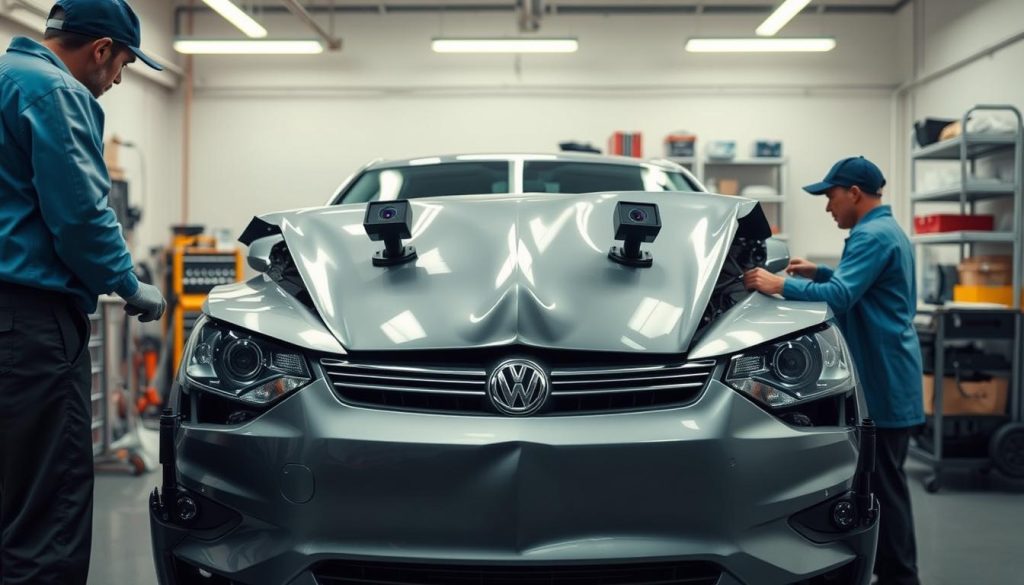
Even minor collisions can have a substantial impact on the alignment and functionality of ADAS sensors. ADAS sensors, located throughout the vehicle, are sensitive to the external environment and can be damaged or misaligned even by hitting a road curb.
How Even Minor Collisions Affect Sensor Alignment
A low-speed hit to the front bumper can move the radar module just enough to cause problems. Typically, a few millimeters of displacement is all it takes to affect the system’s performance. For instance, adaptive cruise control might read slower vehicles too late or not at all.
Critical Components Vulnerable to Damage
Several ADAS components are particularly vulnerable in collision scenarios, including forward-facing cameras, radar sensors, ultrasonic sensors, and their mounting brackets. Bumper damage, frame distortion, or windshield replacement can all affect sensor positioning and performance.
Why Proper Repairs Matter for System Functionality
Proper repairs by qualified technicians are essential for restoring ADAS functionality after collision damage. Improper repairs can lead to false alerts, delayed system responses, or complete failure of critical safety features. Understanding these impacts helps vehicle owners recognize the importance of comprehensive ADAS assessment following any collision repair.
Types of Repairs That Require ADAS Recalibration
Vehicle owners should be aware that certain repairs can affect their ADAS, requiring recalibration to restore system integrity. Advanced Driver Assistance Systems rely on a complex network of sensors and cameras to provide safety features like lane departure warnings and automatic emergency braking.
Windshield Replacements and Forward-Facing Cameras
Replacing a windshield can significantly impact the mounting angle of ADAS cameras. If the glass holding a forward-facing camera is replaced, calibration cannot be skipped. This camera feeds critical data to features such as lane departure alerts and automatic high beams. Without proper recalibration, these safety features may not function correctly.
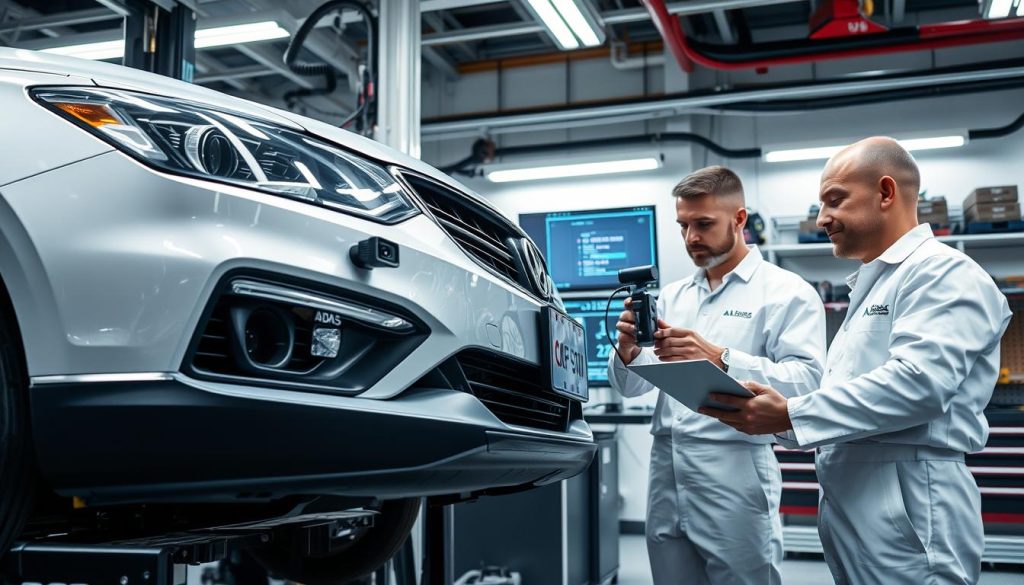
Bumper Repairs and Radar Sensors
Bumper repairs or replacements can impact radar sensors used for adaptive cruise control and collision avoidance. These sensors require precise recalibration to maintain their accuracy. Even minor adjustments to the bumper can affect the radar’s signal path, potentially leading to system malfunctions.
Suspension Work and Alignment Adjustments
Adjusting vehicle height or wheel alignment alters ADAS system calibration. Work on suspension or performing a wheel alignment changes the vehicle’s geometry, directly affecting how ADAS sensors measure angles, distances, and road position.
Panel Replacements and Their Effect on Sensors
Body panel replacements, including fenders, quarter panels, and doors, can interfere with the performance of proximity sensors and blind spot detection systems. Even cosmetic repairs near sensor locations can affect signal paths, requiring professional recalibration to ensure system integrity.
Understanding these repair scenarios helps vehicle owners anticipate when ADAS calibration should be included in repair estimates. By doing so, they can ensure their vehicle’s safety features continue to function as intended, maintaining road safety for themselves and others.
The ADAS Calibration Process Explained
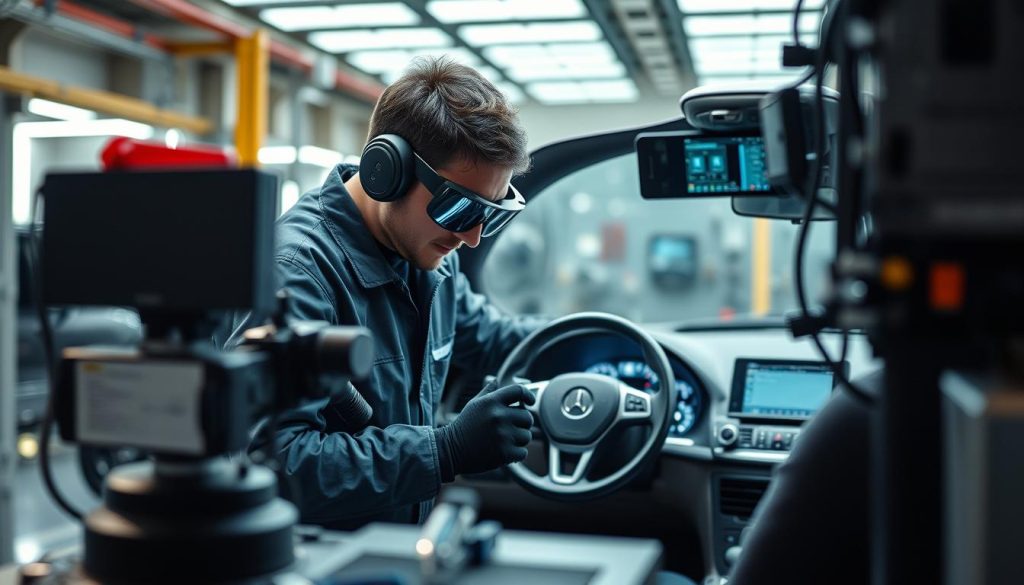
Proper ADAS calibration requires a controlled environment and specialized tools. The calibration process is crucial for ensuring that Advanced Driver Assistance Systems (ADAS) function correctly after repairs.
Static vs. Dynamic Calibration Methods
There are two primary methods of ADAS calibration: static and dynamic. Static calibration is performed in a controlled shop environment, where technicians use specific targets and equipment to align the ADAS sensors and cameras. On the other hand, dynamic calibration involves road testing the vehicle to calibrate the ADAS system while it’s in operation.
Specialized Equipment and Environment Requirements
The equipment used for ADAS calibration includes manufacturer-specific targets, reflective boards, and high-precision alignment tools. The environment in which calibration is performed is equally important, requiring level floors, controlled lighting, and minimal reflective surfaces to ensure accuracy.
Manufacturer-Specific Calibration Procedures
Each vehicle manufacturer has its own procedures for recalibrating ADAS systems. Technicians must follow the exact OEM specifications, which often require specialized training and tools. This variability underscores the complexity of ADAS calibration and the need for skilled professionals.
Documentation and Verification Steps
The calibration process involves not only the actual calibration but also thorough documentation and verification steps. After calibration, technicians must verify that the ADAS system is functioning correctly and document the procedures for future reference and insurance purposes.
By understanding the intricacies of the ADAS calibration process, vehicle owners can appreciate the importance of having this work done by trained professionals with access to the right tools and information. This ensures that their vehicle’s safety features are functioning as intended, providing a safe driving experience.
Risks of Skipping ADAS Calibration After Repairs
After vehicle repairs, failing to calibrate ADAS systems can lead to compromised safety features. The ADAS calibration process is crucial to ensure that the various sensors and cameras are working in harmony to provide the driver with accurate information and timely warnings.
Safety Implications for Drivers and Passengers
Skipping ADAS calibration introduces the risk of inaccurate warnings or safety failures. For instance, if a radar or camera is reinstalled without proper calibration, the system won’t interpret its environment correctly. This can lead to false alerts or, worse, no alerts at all when a real threat is present.
System Malfunctions and False Alerts
Improperly calibrated systems can create dangerous situations. For example, adaptive cruise control may fail to detect slower vehicles ahead, or automatic emergency braking may activate too late. Common system malfunctions include false alerts that can startle drivers, missed warnings for actual hazards, and erratic system behavior.
Potential Liability Issues for Vehicle Owners
If an accident occurs involving an improperly calibrated ADAS system, vehicle owners may face liability issues, including insurance complications and legal responsibility. Proper documentation of calibration is increasingly required by insurance companies for claim approval.
Conclusion: Trust Miracle Body and Paint Collision Center for Expert ADAS Repairs
Correct ADAS calibration is key to maintaining the integrity of your vehicle’s safety systems. At Miracle Body and Paint Collision Center, we understand the critical importance of proper ADAS calibration after vehicle repairs. Our technicians are trained to use specialized tools and follow manufacturer specifications to ensure all ADAS features function correctly.
With two convenient locations in San Antonio, we serve our customers with comprehensive ADAS repair and calibration services. Our commitment to customer safety and satisfaction is reflected in our thorough documentation and verification of all calibration procedures. Don’t compromise on safety – trust us to repair your vehicle with precision.
Contact us today at our North West San Antonio – Leon Valley location at (210) 680-1987 or visit our Northeast San Antonio location. Let our expert technicians ensure your vehicle’s ADAS features are functioning as intended, keeping you safe on the road.


